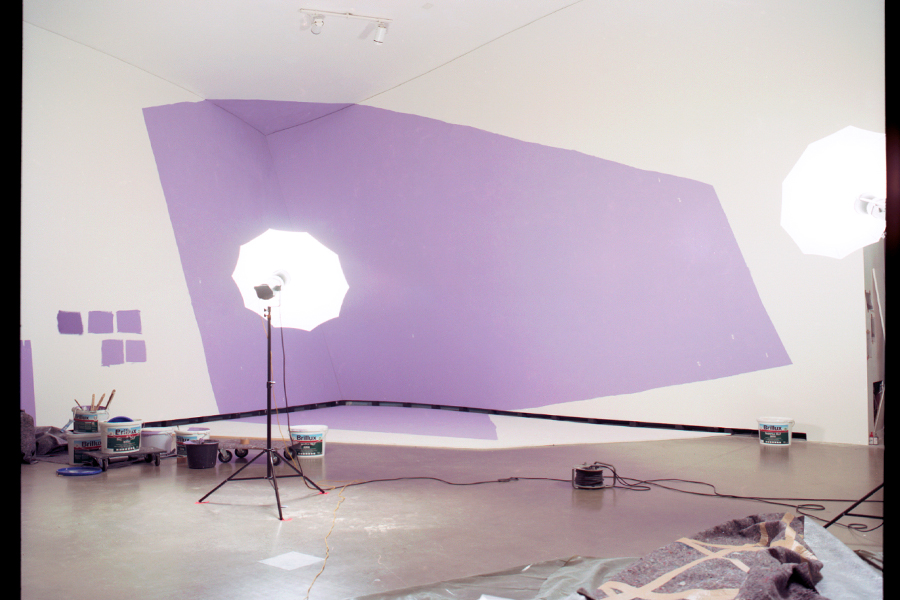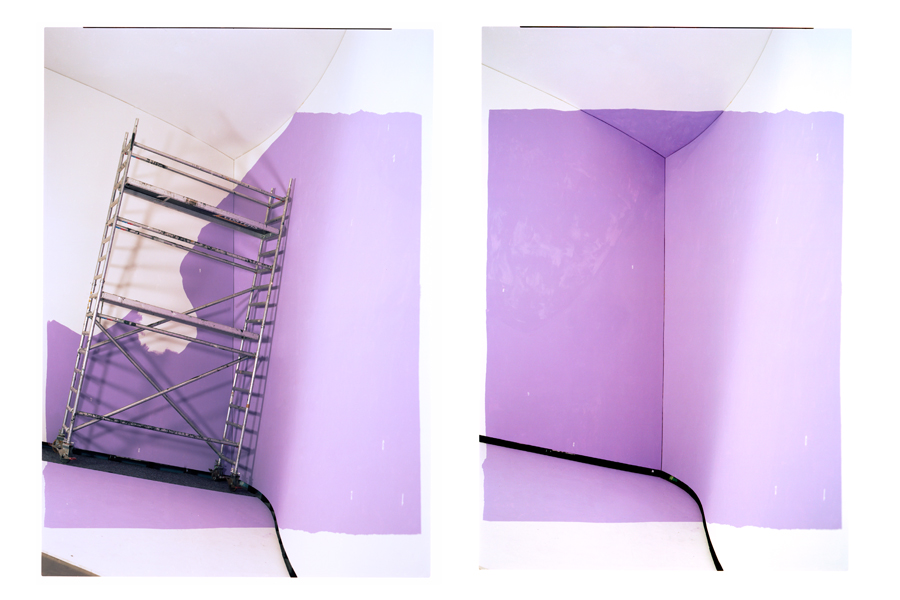5 questions to Katja Mater
Katja Mater (born 1979 in Hoorn, the Netherlands) is a Dutch artist. For the exhibition “Revolution in red-yellow-blue” she was invited to create a site specific work.
We had the chance to talk to her while she was working on “Site Specific Tiled, 01/10/17 Herford”.
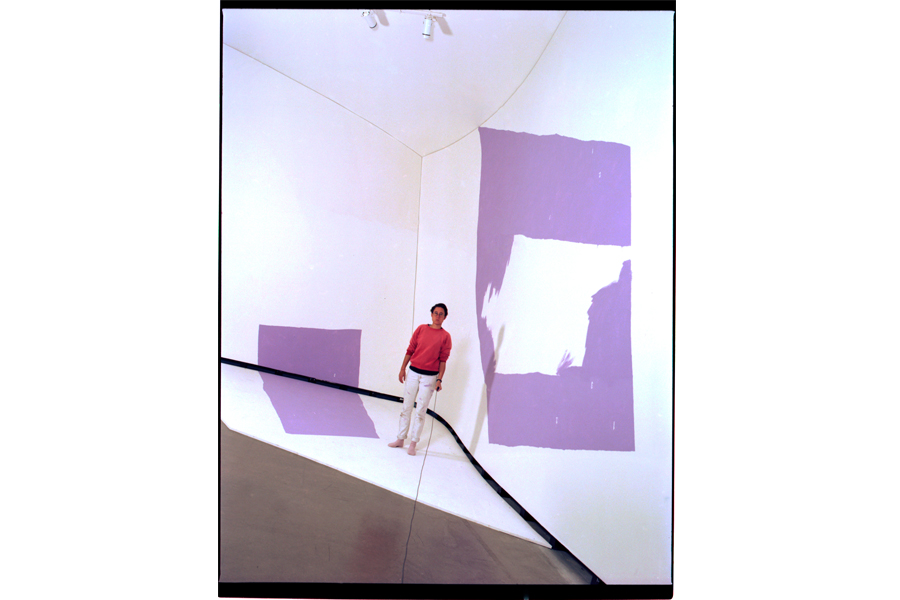
One of De Stijl’s central design principles is based on the reduction to the three primary colours – red, yellow and blue. From these, all further hues can be created by mixing. When the visitors leave the historical part of the current Marta exhibition, they will come across your works presented on a violet wall. Why did you choose this colour in particular?
Normally I end up choosing colours and materials for their photographic character more than their chromatic qualities. Think; contrast, reflection, saturation, absorption etc. For example I use silver and gold for their reflection of (flash) light, dark colours for their high contrast in multiple exposure. And so in most of my site-specific works I have used black and white for an absolute maximum contrast so far.
But in this case my choice of colour was made more in relation to the context of the exhibition and less to the mechanical side of things. I wanted to work with a colour that was not (or very rarely) used by De Stijl artists, and that is not mixable with red, yellow and blue. While purple is still simply a mix of red and blue, violet is a so-called true colour; it has its own space in the visible spectrum of light (around 750 THz), between blue and the invisible ultraviolet.
Violet is considered a colour of spirituality and of female empowerment, it was the colour of the woman’s suffragette movements in the 1930s, and in the 1970s violet, purple, and pink were the colours of the women’s liberation and feminist movement. A good counterbalance to De Stijl’s male-dominated history.
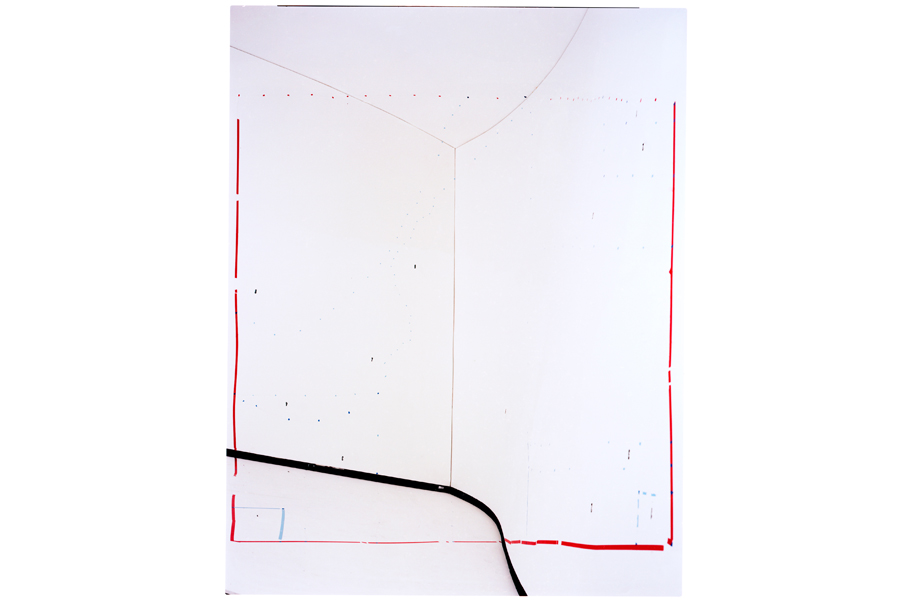
While watching you in the process of working, one might first think of classical photographers. You did not study photography but art. Why do you work with a disk camera, and how exactly does your work originate?
I generally build images in the camera as supposed to taking pictures, and so the pace of the making is quite slow. In Marta I worked several days on 3 photographs while painting the mural. My work is more a hybrid between photography and painting. I used a principle where during the creation of a physical wall painting in space, various moments of the process of the painting are captured on three negatives, building layered images that capture multiple moments in time.
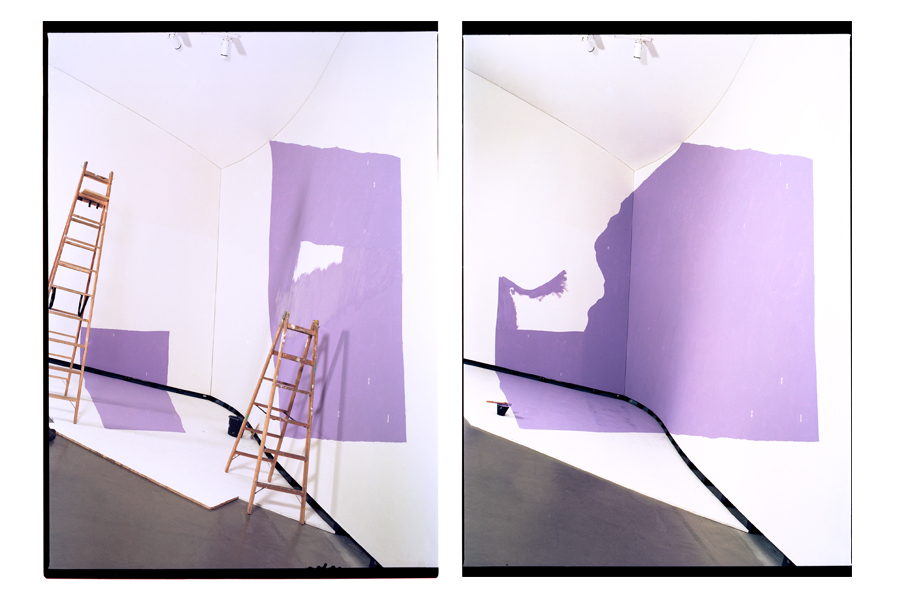
These three negatives all show different outcomes of the same process, by overlaying different fragments of the same event. Each of these negatives offers a different view on the same event, and thus visualizes different ways of looking at one moment in time. During this process, the painting itself eventually became a monochrome mural; and the photographs visualize the various steps along the way. In the final work these 3 versions were brought back together as multiple C-Prints, printed in three different sizes and tiled back into one connecting image.
At first glance, your photomontages appear like abstract compositions. Looking more closely, complex compositions from different shots of rooms come to light. Is this tension between simplicity and complexity important in your work?
Yeah, this balance and fragmentation tend to be very important. I follow a complex process to achieve an image which is both simple and superimposed. The gallery walls are utilized to refer to another kind of perception of time and space, where I point at an area between the making and the work itself.
We could use geometry to refer to an image that is the product of a process or calculation. But at the same time, all my work has a very hand-held quality to it. The presence of gestures, movement and small errors during the making are often reflected in the work. This is an essential part of the work, and is something that happens in time.
Katja Mater: Site Specific Tiled, 01/10/17 Herford (work in progress)
Rietveld saw it as a central role of art to be aware of the fundamentals of one’s perception and to train them. Above all, new, surprising space experiences were central to him. To what extent is this training of perception relevant to your work?
I deal with the perception and tension of „two-dimensional images in three- dimensional space“ (and vice versa), thus exploring the inherent insufficiency of our seeing that determines our perception.
For me photography is a non-transparent medium. I try to reveal an alternative to, and experience of, reality by capturing areas where photography and film do not really behave like the human eye. I record events that simultaneously can and cannot be, and thus stand midway between information and interpretation, referring to a parallel reality that is or was, but never really exists because it remains mostly beyond our gaze.
One of your works has been created exclusively for this exhibition. How do you perceive the contrast between the expressive building of Frank Gehry and the clear form language of Gerrit Rietveld, and how did you react to the architecture of the museum with your work?
Making this work and working in this space has been very interesting and exciting. I deliberately chose to use one of the most extreme “Gehry walls” to make “Site Specific Tiled, 01/10/17 Herford”. In my image I decided to use this most extreme ‘off-axe’ as a straight middle line, using a De Stijl-like order in a Gehry space in the image, and in reality shifting my anamorphic mural in a complete off-angle. Also, I love the fact that in the final installation we hung all works with a level, but nothing looks really straight.


